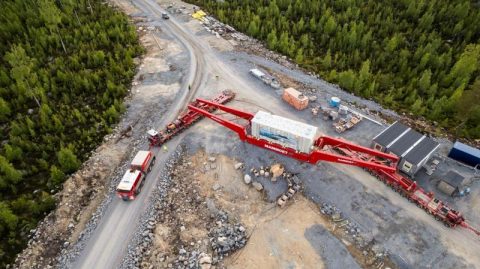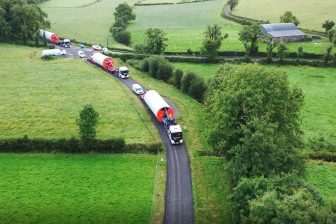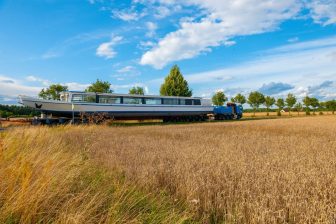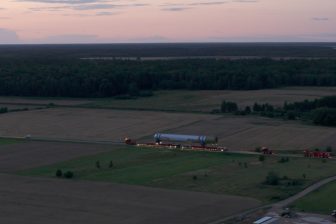
Mammoet transports 390 tonne transformer on Swedish roads
Mammoet transported a 390 metric tonne, 750 MVA transformer 270 kilometres from the Hitachi Energy facility in Ludvika to an Ellevio wind farm in Tovåsen, Ljusdal municipality. This is the heaviest transport ever to take place on Swedish roads.
The Swedish government is aiming to increase its use of renewable wind energy to over 30% of its total energy needs by 2024, as part of net zero goals. The energy company Ellevio has faced transportation challenges while building wind farms in remote, mountainous areas. The company turned to Mammoet for this unique transport for the country’s largest wind power cluster, who in turn collaborated with freight forwarder Martin Bencher.
Brendan James Daley, Mammoet Sweden’s Sales Engineer, explains: “The vast majority of roads in Sweden are not typically designed for heavy transport, and so it was crucial to have a full picture of the route from early in the project. Using planning work already undertaken by Martin Bencher we used our Route Survey Tool to identify what was needed to ensure roads could accommodate the transformer and the equipment transporting it. (…) reinforcements were needed in many places to ensure the weights involved could be withstood. In other places, a 400mm depth of road had to be removed under some bridges to ensure sufficient headroom.”
Transport was powered by a standard prime mover supporting two 700hp Trojan trucks, and the transformer was to be carried using the 400t capacity AL500 girder frame on two 16-axle trailers. Eight axles were also added under the transformer when crossing some of the smaller bridges to ensure the load was spread appropriately.
The transformer was first driven 125 kilometres southeast over two days, from the Hitachi Energy facility in Ludvika to Köping. From there, Martin Bencher managed marine transport to Iggesund. Then, the transformer was driven over the last and most challenging 145 kilometres. Indeed, this part of Sweden has smaller roads. The path also included five bridges and four railway crossings which meant strict crossing windows.
Many permits from local authorities and police were therefore needed, and transport was only permitted at night. It, therefore, took another six nights to reach Tovåsen, and the cargo arrived on schedule. Upon arrival, a Mammoet specialist team handled the jacking and skidding of the transformer into position on its foundation, ready to be installed and commissioned.



